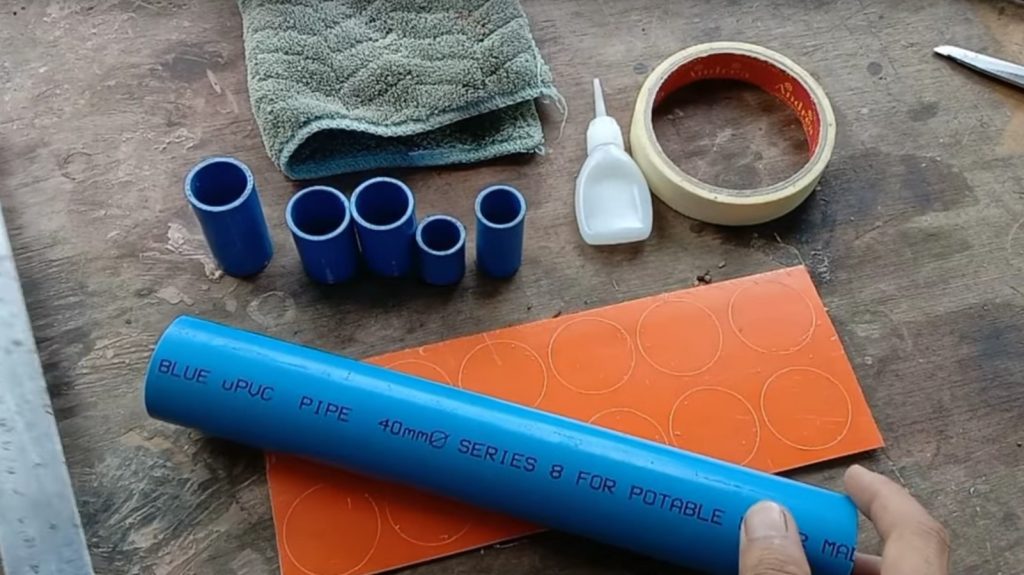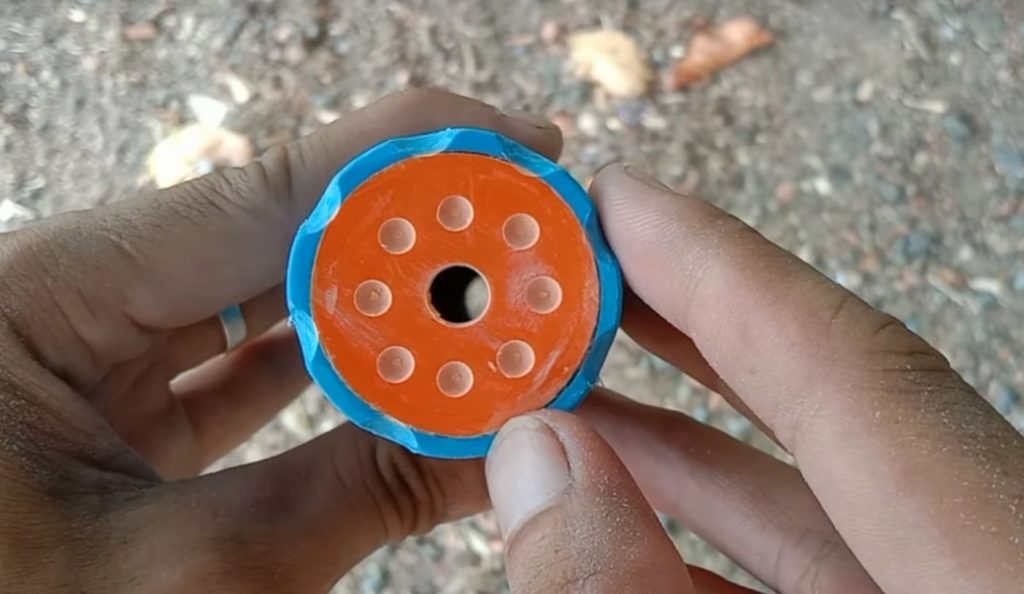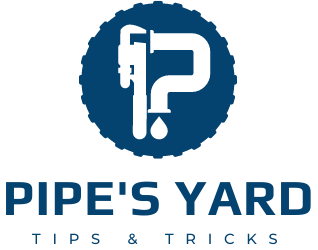Are you a hunter looking for a silencer to reduce noise while hitting prey? Chances are you can’t afford to buy it from a shop and want a DIY recipe to make one. Don’t worry! You can make within a couple of minutes using readily available PVC pipe.
But how to make a silencer out of PVC pipe? Cut two PVC pipes, drill holes in the smaller one, and fix both tubes with two end caps on both ends. However, snug the empty area with an insulator.
Attach the suppressor with the gun and shoot silently. Keep scrolling while we show you DIY steps to craft a superb PVC pipe silencer.
Necessary Tools to Make A Silencer Out of PVC Pipe

You’ll need the following instruments beforehand.
- Two pieces of PVC pipe (1″ and 2″)
- Hacksaw
- Epoxy glue/ Any other PVC glue/ PVC cement
- Measurement tape or Ruler
- Hand Drill
- Sandpaper
- Wood/ Cardboard/ Any Other Sturdy Material
- Insulator (Wool/ Cotton/Foam)
How to Make a Silencer Out of PVC Pipe- Ridiculously Simple 8 Steps
Below I have explained eight simple steps to craft a silencer from a PVC pipe. Make sure you have all the tools I have mentioned above.
Step 1: Find Out the Gun’s Barrel’s Diameter
Measure the diameter of the gun’s barrel. Note the width of the barrel. Then, take the count of length too.
Step 2: Measure the PVC and Cut to Size
Now, take the measuring tape, and measure the 2″ PVC pipe. Mark 10 inches across the length. Cut with a cutting tool. Hacksaw performs best!
However, you can take the help of any other means, say, a bandsaw, a plastic pipe cutter, or a meter saw. There will be some rough edges. Make them smooth using sandpaper.
Then, measure the 1″ PVC pipe to 12 inches across the long border. Again, Mark and cut.
The thinner pipe is to serve as the barrel of the silencer. It always remains 2 inches longer than the earlier fatty pipe. However, these lengths may change according to your gun’s barrel length-shorter or lengthier.
Step 3: Drill Holes in the 1-Inch Pipe
To do so-
- You’ve to drill four lines of holes along the small-width barrel.
- Start with marking with a pencil or a permanent marker pen.
- Draw the holes in one straight line upside down. Every hole should be spaced adequately, say, ¼ inch.
- Do the same for the opposite side.
- Rotate it 90 degrees. Please do the same on this surface, and it’s the opposite surface. In the end, you’ll draw holes in four surfaces.
- Take the hand drill and start making holes, each 3/16 inch.
- However, the hole size may be adjusted by the bullet size. The hole remains more petite than the projectile; it’s the rule.
- Do you’ve four lines of parallel drill holes? If yes, let’s go to the next step!
- But there will be some rough edges. Use a rotary tool or sandpaper and smooth the outer and inner surfaces of this pipe.
Step 5: Barrel is Ready
Now, you’ve prepared your barrel. So, slide the barrel pipe of the silencer through the larger one. Note that the barrel remains 2 inches longer than the latter pipe.

Step 6: Make an End Cap and Attach Between the Two Pipes
Make two donut-shaped end caps from wood, cardboard, or any other durable material. These end caps will be placed between the fatty pipe and the thinner pipe.
So, the total diameter is 2 inches while the hole inside is 1 inch.
Now, it’s time to seal it between two pipes. Put it opposite the side where the barrel extends 2-inch PVC.
Use any glue to snug them in place. Wait until the glue dries and the two pipes become fixed with each other with the end cap in between.
Don’t use the second-end cap now. We’ll need it later.
Step 7: Put Insulators in the Gap Between Two Pipes
Here starts the main magic of the silencer. Fill the area between two tubes tightly with an insulator. You can use steel wools, cotton balls, or mattress foams.
You’ve already snuffed one end with the first end cap, right? Now, put the second end cap on the opposite side and seal it with glue as you’ve done earlier.
Final Step: Connect the Silencer With The Gun
Good job! You’ve made a suppressor. Now, secure the smaller pipe, which extends beyond the larger one, with the gun’s barrel.
For better safety, you may tight them using a hose clamp.
Warnings!!! Don’t Break the Law
There is a legal dispute to build a silencer. Unless you are a Class 3 Firearms Dealer, it is prohibited to construct a silencer for anything that discharges a projectile.
Plus, never aim your gun at any human body or pet animal. If you do, you’ll end up in jail.
Some countries or territories forbid making silencers. So, check your state’s regulations before going to make this.
Additional Tips
- Use sandpaper to smooth the surface of the barrel. This will help you deter irregularities in firing. As a result, the firearm remains free of damage.
- Use Epoxy Glue to plug the end cap between pipes. This glue is ideal for PVC uses.
Frequently Asked Questions
Here are some additional questions and answers about this DIY PVC silencer.
Q: How much barrel length should be covered by the silencer?
It depends on the weight of the silencer. If it is heavy, you must slide more to ensure it remains in line with the gun. If it is light, no more than one inch is needed. So, the Sigma rule is-“Slide as much as needed to fix the silencer in a straight line with the gun.”
Q: How effective is this silencer?
Sorry to say the silencer is a misnomer. It doesn’t silence the sound of the gun because 90% of the sound comes from the ignition. It can only muffle the sound which comes from the barrel.
Q: Why should I drill holes in the smaller pipe?
Actually, these tiny but recurrent holes serve the dampening effect and reduce noise. The holes distribute the high-pressurized air. Consequently, there remains less pressurized air to exit. Eventually, less sound is created.
Final Words
Though our homemade PVC silencer is less effective than a real silencer, it is easy to make and use. And it costs you only a few bucks. You may have to pay a handsome amount to buy a suppressor from the market; we saved you.
We admit a PVC pipe is less durable, so it may crack or break over time. Plus, excessive heat or pressure reduces its lifespan. Still, it is an easy-to-make, easy-to-assemble, cost-effective option to achieve amenable gun sound.
By the way, keep the local laws and regulations about firearms in mind. Don’t break any rules by making and using the silencer with your gun.

